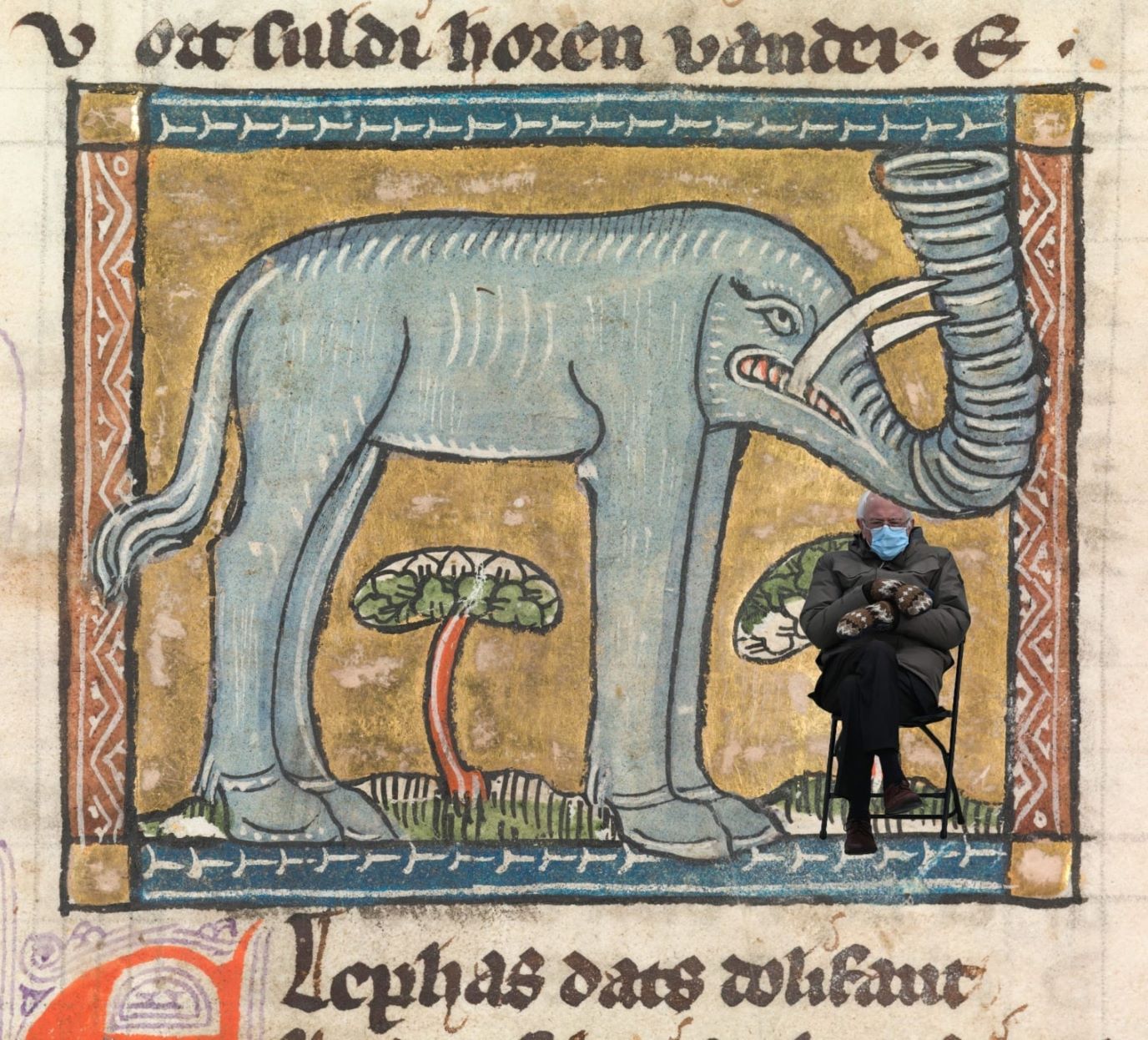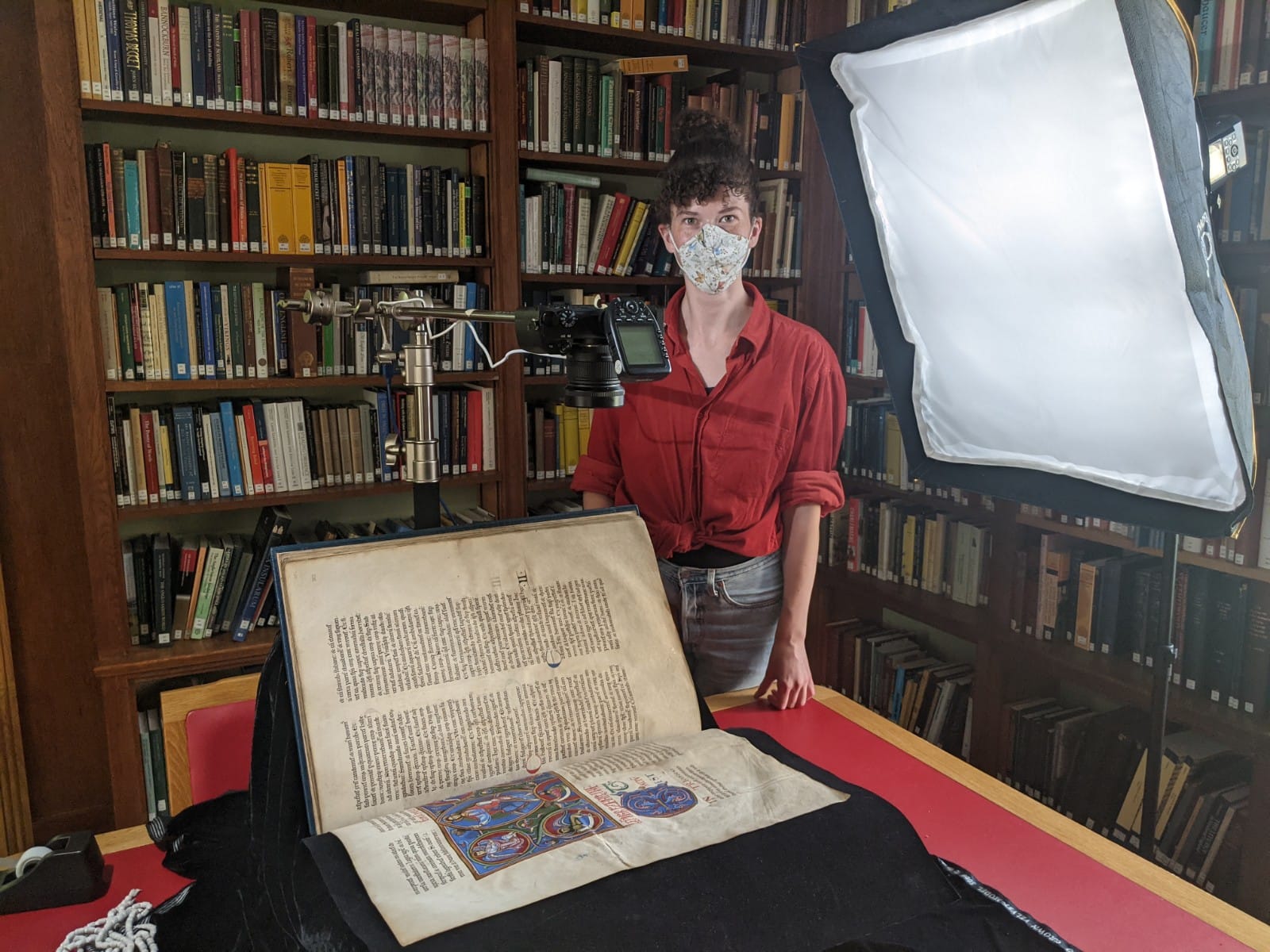Het belang en de schoonheid van het digitale middeleeuwse handschrift
Wat zijn de gevolgen van het digitaliseren van middeleeuwse handschriften? Dat onderzocht promovendus Suzette van Haaren. Zij promoveert op 9 mei aan de Rijksuniversiteit Groningen.
Tekst: Marjolein te Winkel
Een selfie vanaf je vakantieadres, een foto van je lunch of een gifje van een kat die in een schoenendoos kruipt: het delen van een afbeelding is tegenwoordig heel gewoon en erg gemakkelijk. Ook foto’s van middeleeuwse handschriften worden al een aantal jaren gretig gedeeld op sociale media, vaak met een tekst die de afbeelding verbindt aan een actuele gebeurtenis of een bepaalde gemoedstoestand.
Tegenstelling van het oude en het nieuwe
Dat voelt misschien niet als een belangrijke culturele gebeurtenis, maar dat is het wel degelijk, zegt promovendus Suzette van Haaren. “Een afbeelding van honderden jaren oud krijgt opeens een connectie met het moderne. Zo komt een afbeelding die oorspronkelijk ver van ons af staat in een moderne vorm ineens dichtbij, omdat je er een grapje over kan maken dat iets met nu te maken heeft. Het is deze blijkbare tegenstelling van het oude en het nieuwe dat ons aanspreekt.”

Het digitaliseren van het middeleeuwse handschrift leidt tot nieuw gebruik, nieuwe contexten, en een nieuw, en veel groter, publiek. Van Haaren: “Deze afbeeldingen waren al die tijd alleen te zien in bibliotheken of musea. Wie ze wilde zien, moest daar moeite voor doen. Sinds de digitalisering, die zo’n vijfentwintig jaar geleden begon, zijn al die afbeeldingen voor iedereen met een internetverbinding binnen handbereik.”
Medieval Meme Generator
Dat is in de eerste plaats gemakkelijk voor academici die de afbeeldingen bestuderen - zeker in de afgelopen twee jaar, toen bibliotheken en musea de deuren sloten als gevolg van de coronamaatregelen. Maar de beelden hebben als gevolg van de digitalisering ook een nieuwe functie gekregen, als meme op social media.
Van Haaren: “Door de digitalisering komen veel meer mensen in aanraking met middeleeuwse handschriften, en veruit meesten zien deze handgeschreven en prachtig gedecoreerde boeken alleen als digitale afbeeldingen op ons computerscherm, en nooit ‘in het echt’. Culturele instanties springen daar op hun beurt weer op in. De Koninklijke Bibliotheek heeft bijvoorbeeld de Medieval Meme Generator geïntroduceerd, waar je middeleeuwse memes kan maken om online te delen, en tegelijkertijd iets kan leren over het handschrift zelf.”
Nieuwe contexten
Van Haaren concludeert dat een digitale afbeelding van een middeleeuws handschrift moet worden beschouwd als een cultureel object dat op zichzelf staat, naast het oorspronkelijke, analoge handschrift, en dat het als zodanig gewaardeerd moet worden. “Bij het gebruik van digitale middeleeuwse handschriften is de oorspronkelijke context van het middeleeuwse boek soms ver te zoeken. Hierdoor is er ruimte om het handschrift in nieuwe contexten te zien die voorheen wellicht niet voor mensen beschikbaar waren. Het digitale beeld doet dus geen afbreuk aan het origineel, het voegt iets toe.”

Meer nieuws
-
16 december 2025
Hoe AI mensen met taalstoornissen kan helpen hun spraak te vinden
-
18 november 2025
Een wifebeater? Hoe taal schadelijke ideeën versterkt
-
03 november 2025
Menopauze in perspectief: Hoe de media onze beleving beïnvloeden
